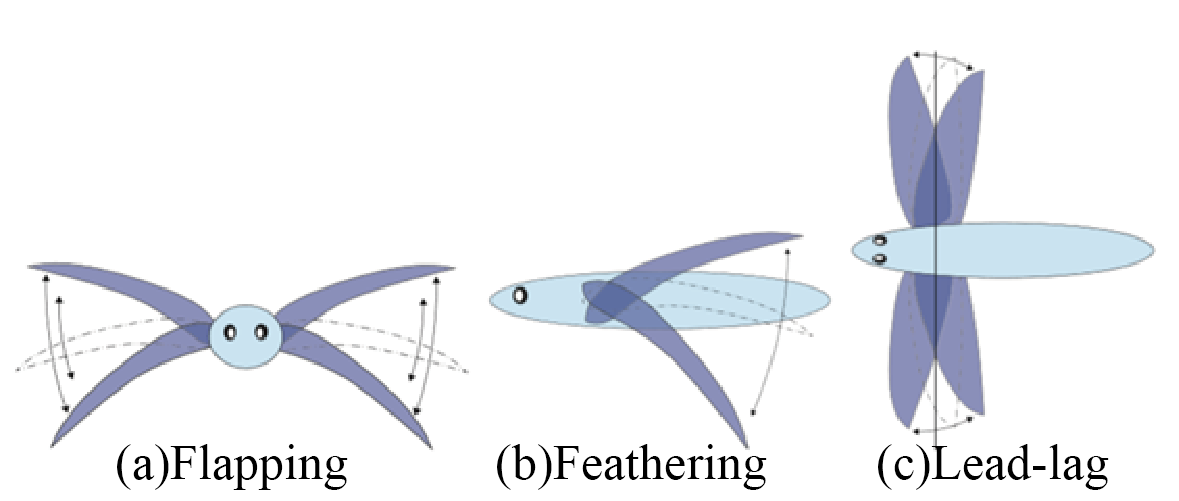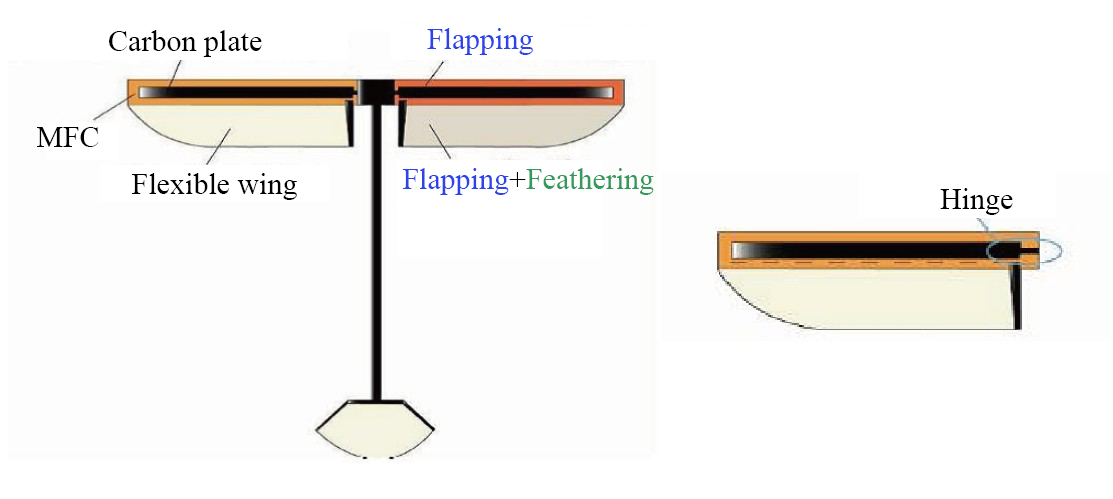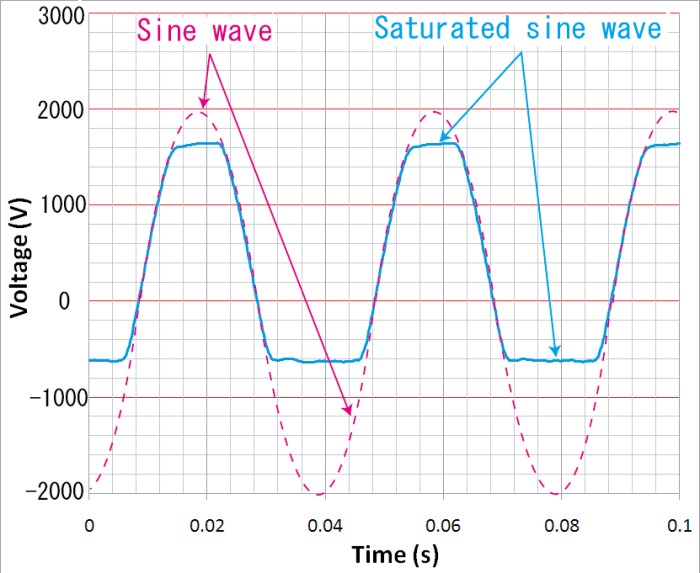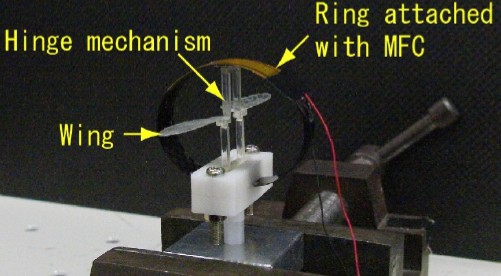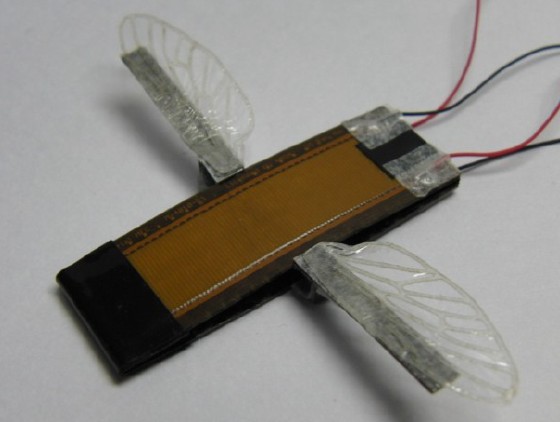![[PukiWiki] [PukiWiki]](image/logo.png)
電気通信大学 明・佐藤研究室 |
Research and development of biomimetic soft robotsIn our laboratory, we are working on the research and development of highly flexible biomimetic robots. They consist of flexible piezoelectric actuators and flexible materials (CFRP, PET, etc.) and behave smoothly and softly. Utilizing this flexible structure and motion, we aim to realize a robot with high mobility and adaptability by imitating creatures with various advantages. Biomimetic soft flapping robotFocusing on the small size and light weight of the drive mechanism using piezoelectric actuators, we are conducting research of robots based on living creatures that flutter. Up to now, we have achieved improvements in thrust and lift that are directly related to flight performance through the introduction of feathering motion with reference to the flapping behavior of living organisms and the development of drive modules capable of flapping motion at high frequencies. Furthermore, we are currently aiming to further improve thrust and lift by incorporating the figure-eight motion when flapping and the three-dimensional shape of insect wings. What is flapping, feathering, and lead-lag?The flapping flight consists of a combination of the three actions shown in the figure below. The flapping movement means moving the wing up and down relative to the body axis. The feathering movement means twisting the wing front edge. The lead-lag movement means moving the wing back and forth relative to the body axis. Flapping mechanism with active flapping and passive featheringPiezoelectric fiber composite material was used as an actuator for flapping motion, and passive feathering motion was performed by making the wings flexible. In addition, a mechanism was developed to improve flight performance by adopting a hinge structure at the base of the wing. As a result, the maximum lift exceeded 16 times its own weight, and it was confirmed that the piezoelectric fiber composite material could be applied to flapping robots. Improved flight performance through improved driving methodsIn order to improve the lift and thrust, we improved the performance by flowing various waveforms to the MFC. The sin waveform and the square waveform alone did not give good results, but the use of a combination of the sin waveform and the square waveform (saturated sin waveform) improved the lift and thrust performance. Development of indirect drive flapping drive moduleRing moduleThere are two types of flying insects. The first is the “direct flight muscle type” in which the wing is connected directly to the muscle at the base and flapping by moving the muscle. The second is the “indirect flight muscle type” in which muscles are connected to the exoskeleton and flapping by deformation of the exoskeleton by driving the muscles. This ring module imitates the latter “indirect flight muscle” flapping mechanism. The deformation of the insect exoskeleton was reproduced by driving the piezoelectric fiber composite material on a carbon plate in a ring. The robot consists of three parts: a ring-type drive module, a hinge-type conversion mechanism that converts the ring's vibration motion into flapping motion, and a wing based on actual wing of an insect. Flexible combined double beam moduleThe ring-type module has a problem that the number (area) of MFC is small and the entire module is difficult to deform. Therefore, a new drive module was devised in which the carbon plate was bent and fixed with tape so that both ends could be rotated. As a result, the generated force was about 3.3 times that of the previous model. Also, the conventional hinge mechanism has a problem that stress concentration occurs in the hinge part and it is easily damaged. Therefore, a mechanism with such a rotating hinge was developed. The actual flapping angle of insects is 35-60 °, and this time the conversion mechanism was designed to achieve a flapping angle of 45 degrees. Although the result was unfortunately not flying, we could obtain an average lift of 36.67 [mN] against the robot's own weight of 39.2 [mN], greatly improving the ratio of lift to its own weight. Effect of three-dimensional wing shape on liftIn order to improve thrust and lift, we divided the tributaries inside the wing into three patterns and measured thrust and lift. As a result, the structure with fewer internal branches has been reduced in weight and maintained appropriate rigidity, and has achieved high performance. Development of flapping mechanism imitating dragonfly flapping motionRealization of flapping and feathering motion utilizing the mass eccentricity of the wingObserving the flying dragonflies, you can see that the wings are not just flapping up and down, but that the wings are flapping while being twisted periodically. This movement is called feathering, and it is thought that the dragonfly improves lift and thrust. With reference to the special shape of the dragonfly wing, we generated a wing shape with irregularities and improved the lift. As a result, we were able to improve lift and thrust during forward flight compared to flat wings. For the above reasons, we are studying a mechanism that can perform a feathering operation. As a result of investigating the dragonfly wings, it was found that the dragonfly wings had dark spots called pterostigma, and the density of these spots was higher than other areas. Therefore, it was confirmed that the center of gravity of the dragonfly wing was shifted to the front edge of that. In other words, it is possible that the torsion of the wing has been realized by this bias in the center of gravity. The flapping angle can also be improved by concentrating the mass at the end of the wing. Currently, we have created a wing with a pterostigma pattern, and we plan to incorporate it into the actual machine. Development of flapping mechanism that realizes figure 8 movementAnalyzing the flight mechanism of insects, it is known that the flight takes a trajectory close to the figure 8 by combining flapping motion and feathering motion. Currently, we are developing a mechanism that can realize figure 8 movement using MFC. |
